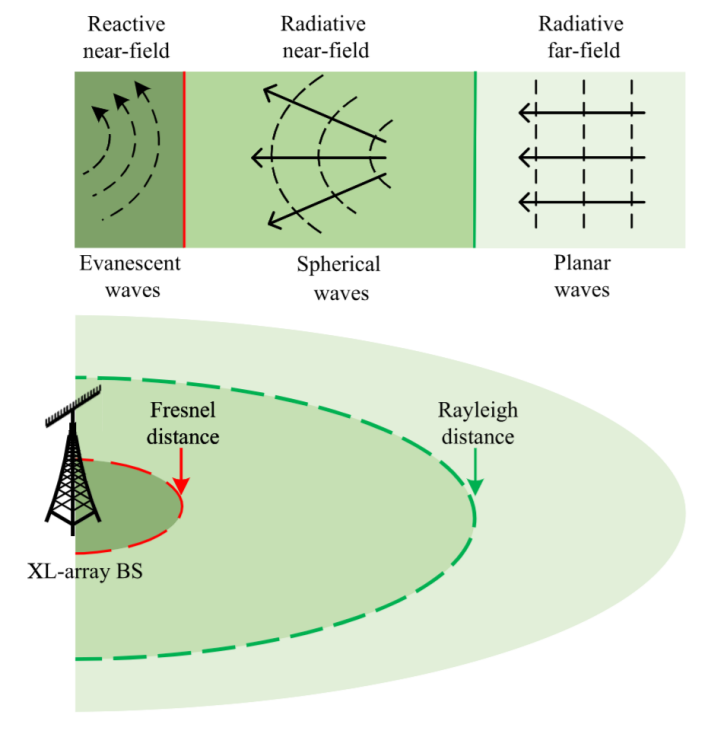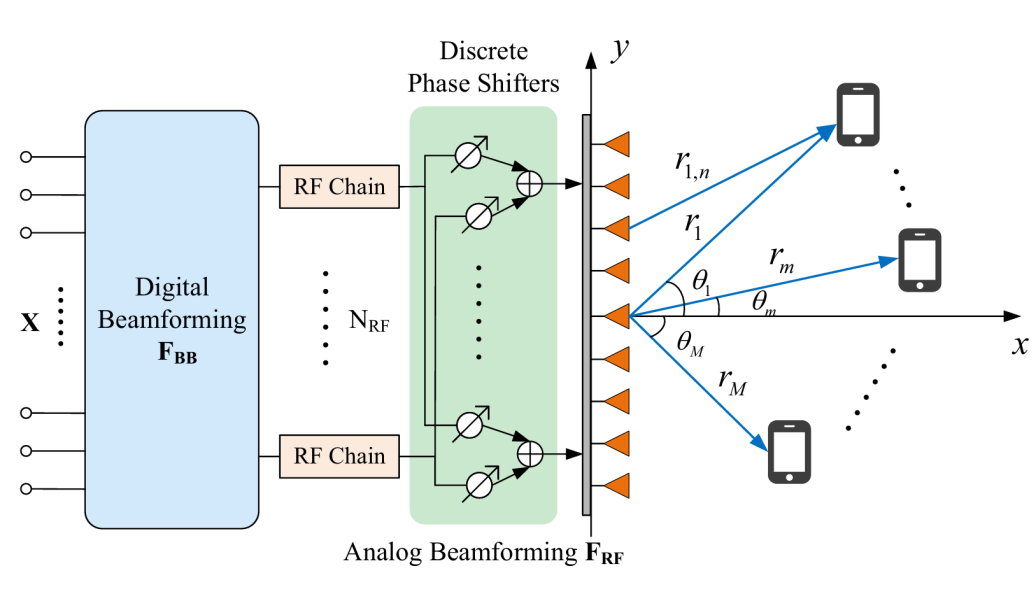Extremely large-scale arrays (XL-arrays) have emerged as a promising technology for enabling near-field communications in future 6G wireless systems. Unlike conventional far-field communications, near-field systems are characterized by spherical wavefronts, allowing beams to be focused at specific locations rather than merely steered in angular directions. This beam-focusing effect opens new possibilities for spatial multiplexing and high-resolution user targeting.

However, the large number of antennas in XL-arrays also leads to significantly increased hardware cost and power consumption—a challenge that is particularly pronounced when high-resolution phase shifters (PSs) are employed in hybrid beamforming architectures. Therefore, studying the use of low-resolution discrete PSs is a more practical and energy-efficient alternative.
Nevertheless, low-resolution PSs introduce several new challenges in near-field communications, especially in beam pattern analysis. It remains unclear whether discrete PSs will affect the beam-focusing effect, and the phase quantization introduced by such PSs renders existing analytical methods inapplicable. This issue remains uncharted and unexplored in current literature.
A research team led by Assistant Professor Changsheng You from the Department of Electronic and Electrical Engineering at the Southern University of Science and Technology (SUSTech) has made significant progress in the analysis of near-field beam patterns under low-resolution PSs. The team proposed a novel method based on Fourier series expansion (FSE), which effectively addresses the challenges introduced by discrete PSs.
Their study, entitled “Near-field Beam-focusing Pattern under Discrete Phase Shifters,” has been published in IEEE Transactions on Wireless Communications (IEEE TWC), a leading journal in the field of communications.
The researchers introduced a FSE technique that reformulates the near-field beam pattern into a mathematically tractable form, enabling analytical characterization of how discrete PSs impact beamforming behavior. This method reveals that discrete PSs introduce additional grating lobes, which may cause interference in multi-user systems. Despite this, the main lobe still exhibits the beam-focusing property, with its beam power increasing with PS resolution. Furthermore, they identified two distinct types of grating lobes, distinguished by beam-focusing and beam steering properties, respectively.

Figure 1. Illustration of XL-array field regions

Figure 2. An XL-array multi-user communication system under discrete PSs
Through numerical simulations, the team demonstrated that the grating lobes generally degrade communication rate performance. However, a low-resolution of 3-bit PSs can achieve similar beam pattern and rate performance with the continuous PS counterpart, while it attains much higher energy efficiency.

Figure 3. The near-field beam pattern under different PS scenarios
This work offers valuable insights into the behavior of near-field beam patterns under low-resolution hardware constraints, and makes a significant contribution to the further practical deployment of near-field communications in future 6G systems.
Undergraduate student Haodong Zhang is the first author of the paper, and Assistant Professor Changsheng You is the corresponding author.
Paper link: https://ieeexplore.ieee.org/abstract/document/11078749
To read all stories about SUSTech science, subscribe to the monthly SUSTech Newsletter.
Proofread ByAdrian Cremin, Yifei REN
Photo ByDepartment of Electronic and Electrical Engineering